Watch Health Mantra Live on Zee Salaam every Sunday at 11:30 am with Dr.Aslam Javed and know about your problems with him
To read the full article Treatment for Kidneys Failure
Dr.Aslam Javed

What are the causes and types of arthritis?
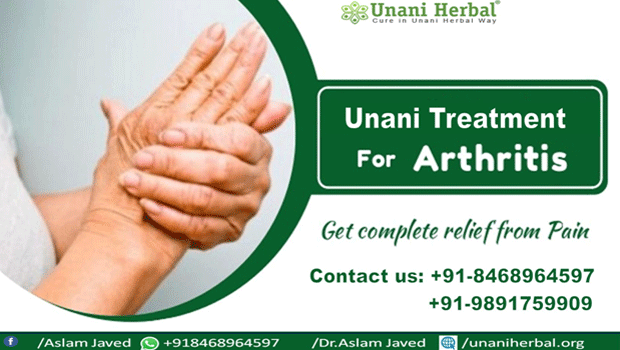
What are the causes and types of arthritis?
Arthritis means joint inflammation, but the term is used to describe around 200 conditions that affect joints, the tissues that surround the joint, and other connective tissue. It is a rheumatic condition.
The most common form of arthritis is osteoarthritis. Other common rheumatic conditions related to arthritis includeTrusted Source gout, fibromyalgia, and rheumatoid arthritis (RA).
Rheumatic conditions tend to involve pain, aching, stiffness, and swelling in and around one or more joints. The symptoms can develop gradually or suddenly. Certain rheumatic conditions can also involveTrusted Source the immune system and various internal organs of the body.
Some forms of arthritis, such as rheumatoid arthritis and lupus (SLE), can affect multiple organs and cause widespread symptoms.
According to the Centers for Disease Control and Prevention (CDC), 54.4 millionTrusted Source adults in the United States have received a diagnosis of some form of arthritis. Of these, 23.7 million people have their activity curtailed in some way by their condition.
Arthritis is more common among adults aged 65 years or older, but it can affect people of all ages, including children.
Fast facts on arthritis
Arthritis refers to around 200 rheumatic diseases and conditions that affect joints, including lupus and rheumatoid arthritis.
It can cause a range of symptoms and impair a person’s ability to perform everyday tasks.
Physical activity has a positive effect on arthritis and can improve pain, function, and mental health.
Factors in the development of arthritis include injury, abnormal metabolism, genetic makeup, infections, and immune system dysfunction.
Treatment aims to control pain, minimize joint damage, and improve or maintain quality of life. It involves medications, physical therapies, and patient education and support.
Treatment
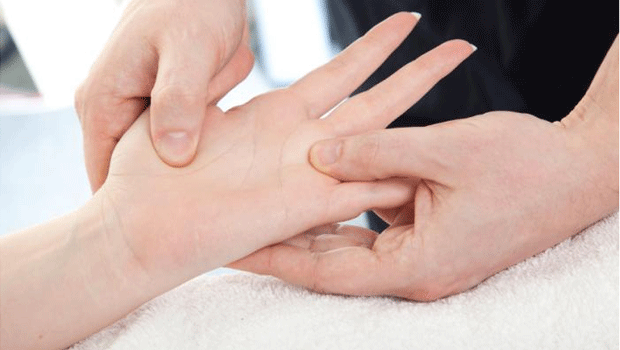 PinterestThe doctor will likely recommend a course of physical therapies to help you manage some of the symptoms of arthritis.
Treatment for arthritis aims to control pain, minimize joint damage, and improve or maintain function and quality of life.
A range of medications and lifestyle strategies can help achieve this and protect joints from further damage.
PinterestThe doctor will likely recommend a course of physical therapies to help you manage some of the symptoms of arthritis.
Treatment for arthritis aims to control pain, minimize joint damage, and improve or maintain function and quality of life.
A range of medications and lifestyle strategies can help achieve this and protect joints from further damage.
Treatment might involveTrusted Source:
- medications
- non-pharmacologic therapies
- physical or occupational therapy
- splints or joint assistive aids
- patient education and support
- weight loss
- surgery, including joint replacement
Medication
- Non-inflammatory types of arthritis, such as osteoarthritis, are often treated with pain-reducing medications, physical activity, weight loss if the person is overweight, and self-management education.
- These treatments are also applied to inflammatory types of arthritis, such as RA, along with anti-inflammatory medications such as corticosteroids and non-steroidal anti-inflammatory drugs (NSAIDs), disease-modifying anti-rheumatic drugs (DMARDs), and a relatively new class of drugs known as biologics.
- Medications will depend on the type of arthritis. Commonly used drugs include:
1. Analgesics
these reduce pain, but have no effect on inflammation. Examples include acetaminophen (Tylenol), tramadol (Ultram) and narcotics containing oxycodone (Percocet, Oxycontin) or hydrocodone (Vicodin, Lortab). Tylenol is available to purchase online.
2. Non-steroidal anti-inflammatory drugs (NSAIDs)
these reduce both pain and inflammation. NSAIDs include available to purchase over-the-counter or online, including ibuprofen (Advil, Motrin IB) and naproxen sodium (Aleve). Some NSAIDs are available as creams, gels or patches which can be applied to specific joints.
3. Counterirritants
some creams and ointments contain menthol or capsaicin, the ingredient that makes hot peppers spicy. Rubbing these on the skin over a painful joint can modulate pain signals from the joint and lessen pain. Various creams are available to purchase online.
4.Disease-modifying antirheumatic drugs (DMARDs)
used to treat RA, DMARDs slow or stop the immune system from attacking the joints. Examples include methotrexate (Trexall) and hydroxychloroquine (Plaquenil).
5. Biologics
used with DMARDs, biologic response modifiers are genetically engineered drugs that target various protein molecules involved in the immune response. Examples include etanercept (Enbrel) and infliximab (Remicade).
6.Corticosteroids
prednisone and cortisone reduce inflammation and suppress the immune system.
Foods to avoid
There are some foods that people with arthritis may want to avoid.
Nightshade vegetables, such as tomatoes, contain a chemical called solanine that some studies have linked with arthritis pain. Research findings are mixed when it comes to these vegetables, but some people have reported a reduction in arthritis symptoms when avoiding nightshade vegetables.
Self-management
Self-management of arthritis symptoms is also important.
Key strategies include:
staying physically active
achieving and maintaining a healthy weight
getting regular check-ups with the doctor
protecting joints from unnecessary stress
Seven habits that can help a person with arthritis to manage their condition are:
1. Being organized
keep track of symptoms, pain levels, medications, and possible side effects for consultations with your doctor.
2. Managing pain and fatigue
a medication regimen can be combined with non-medical pain management. Learning to manage fatigue is key to living comfortably with arthritis.
3. Staying active
exercise is beneficial for managing arthritis and overall health.
4. Balancing activity with rest
in addition to remaining active, rest is equally important when your disease is active.
7. Eating a healthful diet
a balanced diet can help you achieve a healthy weight and control inflammation. Avoid refined, processed foods and pro-inflammatory animal-derived foods and choose whole plant foods that are high in antioxidants and that have anti-inflammatory properties.
8. Improving sleep
poor sleep can aggravate arthritis pain and fatigue. Take steps to improve sleep hygiene so you find it easier to fall asleep and stay asleep. Avoid caffeine and strenuous exercise in the evenings and restrict screen-time just before sleeping.
9. Caring for joints
tips for protecting joints include using the stronger, larger joints as levers when opening doors, using several joints to spread the weight of an object such as using a backpack and gripping as loosely as possible by using padded handles.
Do not sit in the same position for long periods. Take regular breaks to keep mobile.
Physical therapies
Doctors will often recommend a course of physical therapy to help patients with arthritis overcome some of the challenges and to reduce limitations on mobility.
Forms of physical therapy that may be recommended include:
1. Warm water therapy
exercises in a warm-water pool. The water supports weight and puts less pressure on the muscles and joints
2.Physical therapy
specific exercises tailored to the condition and individual needs, sometimes combined with pain-relieving treatments such as ice or hot packs and massage
3.Occupational therapy
practical advice on managing everyday tasks, choosing specialized aids and equipment, protecting the joints from further damage and managing fatigue
Physical activity
Research suggests that although individuals with arthritis may experience short-term increases in pain when first beginning exercise, continued physical activity can be an effective way to reduce symptomsTrusted Source long-term.
People with arthritis can participate in joint-friendly physical activity on their own or with friends. As many people with arthritis have another condition, such as heart disease, it is important to choose appropriate activities.
Joint-friendly physical activities that are appropriate for adults with arthritis and heart disease include:
walking
swimming
cycling
A health care professional can help you find ways to live a healthful lifestyle and have a better quality of life.
Natural therapies
A number of natural remedies have been suggested for different types of arthritis.
According to the organization Versus Arthritis, based in the United Kingdom (U.K.), some research has supported the use of devil’s claw, rosehip, and Boswellia, from the frankincense tree. Devil’s claw and Boswellia supplements can be purchased online
There is some evidenceTrusted Source that turmeric may help, but more studies are needed to confirm their effectiveness.
Various other herbs and spices have been recommended for RA, but again, more research is needed. They include turmeric, garlic, ginger, black pepper, and green tea.
Many of these herbs and spices are available to purchase online in supplement form, including turmeric, ginger, and garlic.
Anyone who is considering using natural remedies for any type of arthritis should speak to a doctor first.
Causes
There is no single cause of all types of arthritis. The cause or causes vary according to the type or form of arthritis.
Possible causes may include:
injury, leading to degenerative arthritis
abnormal metabolism, leading to gout and pseudogout
inheritance, such as in osteoarthritis
infections, such as in the arthritis of Lyme disease
immune system dysfunction, such as in RA and SLE
Most types of arthritis are linked to a combination of factors, but some have no obvious cause and appear to be unpredictable in their emergence.
Some people may be genetically more likely to develop certain arthritic conditions. Additional factors, such as previous injury, infection, smoking and physically demanding occupations, can interact with genes to further increase the risk of arthritis.
Diet and nutrition can play a role in managing arthritis and the risk of arthritis, although specific foods, food sensitivities or intolerances are not known to cause arthritis.
Foods that increase inflammation, particularly animal-derived foods and diets high in refined sugar, can make symptoms worse, as can eating foods that provoke an immune system response.
Gout is one type of arthritis that is closely linked to diet, as it is caused by elevated levels of uric acid which can be a result of a diet high in purines.
Diets that contain high-purine foods, such as seafood, red wine, and meats, can trigger a gout flare-up. Vegetables and other plant foods that contain high levels of purines do not appear to exacerbate gout symptoms, however.
Risk factors for arthritis
Certain risk factors have been associated with arthritis. Some of these are modifiable while others are not.
Non-modifiable arthritis risk factors:
Age: the risk of developing most types of arthritis increases with age.
Sex: most types of arthritis are more common in females, and 60 percent of all people with arthritis are female. Gout is more common in males than females.
Genetic factors: specific genes are associated with a higher risk of certain types of arthritis, such as rheumatoid arthritis (RA), systemic lupus erythematosus (SLE) and ankylosing spondylitis.
Modifiable arthritis risk factors:
Overweight and obesity: excess weight can contribute to both the onset and progression of knee osteoarthritis.
Joint injuries: damage to a joint can contribute to the development of osteoarthritis in that joint.
Infection: many microbial agents can infect joints and trigger the development of various forms of arthritis.
Occupation: certain occupations that involve repetitive knee bending and squatting are associated with osteoarthritis of the knee.
Comorbidities
More than half of adults in the U.S. with arthritis report high blood pressure. High blood pressure is associated with heart disease, the most common comorbidity among adults with arthritis.
Around 1 in 5 of adults in the U.S. who have arthritis are smokers. Smoking is associated with chronic respiratory conditions, the second most common comorbidity among adults with arthritis.
Types
There are around 200 types of arthritis, or musculoskeletal conditions. These are split into seven main groups:
- Inflammatory arthritis
- Degenerative or mechanical arthritis
- Soft tissue musculoskeletal pain
- Back pain
- Connective tissue disease
- Infectious arthritis
- Metabolic arthritis.
Inflammatory arthritis
Inflammation is a normal part of the body’s healing process. The inflammation tends to occur as a defense against viruses and bacteria or as a response to injuries such as burns. However, with inflammatory arthritis, inflammation occurs in people for no apparent reason.
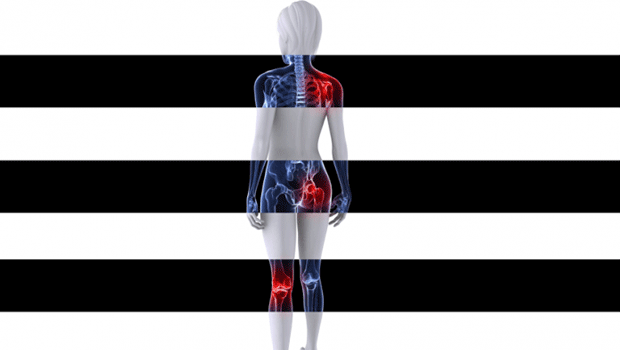 PinterestInflammatory arthritis can affect several joints, damaging the surface of the joints and the underlying bone.
Inflammatory arthritis is characterized by damaging inflammation that does not occur as a normal reaction to injury or infection. This type of inflammation is unhelpful and instead causes damage in the affected joints, resulting in pain, stiffness and swelling.
Inflammatory arthritis can affect several joints, and the inflammation can damage the surface of the joints and also the underlying bone.
PinterestInflammatory arthritis can affect several joints, damaging the surface of the joints and the underlying bone.
Inflammatory arthritis is characterized by damaging inflammation that does not occur as a normal reaction to injury or infection. This type of inflammation is unhelpful and instead causes damage in the affected joints, resulting in pain, stiffness and swelling.
Inflammatory arthritis can affect several joints, and the inflammation can damage the surface of the joints and also the underlying bone.
Examples of inflammatory arthritis include:
Rheumatoid arthritis (RA)
Reactive arthritis
Ankylosing spondylitis
Arthritis associated with colitis or psoriasis
The word “arthritis” means “joint inflammation,” but inflammation may also affect the tendons and ligaments surrounding the joint.
Degenerative or mechanical arthritis
Degenerative or mechanical arthritis refers to a group of conditions that mainly involve damage to the cartilage that covers the ends of the bones.
The main job of the smooth, slippery cartilage is to help the joints glide and move smoothly. This type of arthritis causes the cartilage to become thinner and rougher.
To compensate for the loss of cartilage and changes in joint function, the body begins to remodel the bone in an attempt to restore stability. This can cause undesirable bony growths to develop, called osteophytes. The joint can become misshapen. This condition is commonly called osteoarthritis.
Osteoarthritis can also result from previous damage to the joint such as a fracture or previous inflammation in the joint.
Soft tissue musculoskeletal pain
Soft tissue musculoskeletal pain is felt in tissues other than the joints and bones. The pain often affects a part of the body following injury or overuse, such as tennis elbow, and originates from the muscles or soft tissues supporting the joints.
Pain that is more widespread and associated with other symptoms may indicate fibromyalgia.
Back pain
Back pain can arise from the muscles, discs, nerves, ligaments, bones, or joints. Back pain may stem from problems with organs inside the body. It can also be a result of referred pain, for example, when a problem elsewhere in the body leads to pain in the back.
There may be a specific cause, such as osteoarthritis. This is often called spondylosis when it occurs in the spine. Imaging tests or a physical examination may detect this.
A “slipped” disc is another cause of back pain, as is osteoporosis, or thinning of the bones.
If a doctor cannot identify the exact cause of back pain, it is often described as “non-specific” pain.
Connective tissue disease (CTD)
CTD involves joint pain and inflammation. The inflammation may also occur in other tissues, including the skin, muscles, lungs, and kidneys. This can result in various symptoms besides painful joints, and it may require consultation with a number of different specialists.
Examples of inflammatory arthritis include:
SLE, or lupus
scleroderma, or systemic sclerosis
dermatomyositis
Infectious arthritis
A bacterium, virus, or fungus that enters a joint can sometimes cause inflammation.
Organisms that can infect joints include:
Salmonella and Shigella, spread through food poisoning or contamination
chlamydia and gonorrhea, which are sexually transmitted diseases (STDs)
hepatitis C, a blood-to-blood infection that may be spread through shared needles or transfusions
A joint infection can often be cleared with antibiotics or other antimicrobial medication. However, the arthritis can sometimes become chronic, and joint damage may be irreversible if the infection has persisted for some time.
Metabolic arthritis
Uric acid is a chemical created when the body breaks down substances called purines. Purines are found in human cells and several foods.
Most uric acid dissolves in blood and travels to the kidneys. From there, it passes out in urine. Some people have high levels of uric, acid because they either naturally produce more than they need or their body cannot clear the uric acid quickly enough.
Uric acid builds up and accumulates in some people and forms needle-like crystals in the joint, resulting in sudden spikes of extreme joint pain or a gout attack.
Gout can either come and go in episodes or become chronic if uric acid levels are not reduced.
It commonly affects a single joint or a small number of joints, such as the big toe and hands. It usually affects the extremities. One theory is that uric acid crystals form in cooler joints, away from the main warmth of the body.
Some of the more common types of arthritis are discussed below.
Rheumatoid arthritis
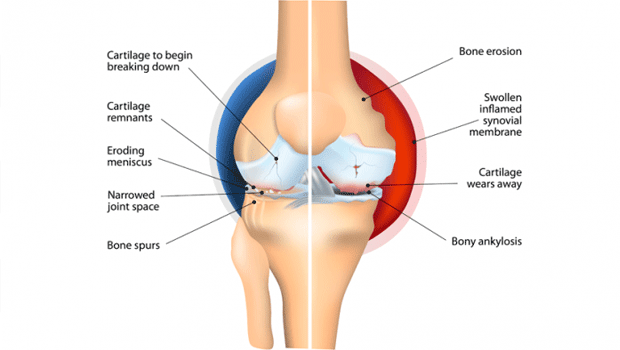 PinterestRheumatoid arthritis and osteoarthritis share some characteristics, but they are different conditions.
Rheumatoid arthritis (RA) occurs when the body’s immune system attacks the tissues of the body, specifically connective tissue, leading to joint inflammation, pain, and degeneration of the joint tissue.
Cartilage is a flexible, connective tissue in joints that absorb the pressure and shock created by movement like running and walking. It also protects the joints and allows for smooth movement.
Persistent inflammation in the synovia leads to the degeneration of cartilage and bone. This can then lead to joint deformity, pain, swelling, and redness.
RA can appear at any age and is associated with fatigue and prolonged stiffness after rest.
RA causes premature mortalityTrusted Source and disability and it can compromise quality of life. Conditions it is linked to include cardiovascular diseases, such as ischemic heart disease and stroke.
Diagnosing RA early gives a better chance of learning how to manage symptoms successfully. This can reduce the impact of the disease on quality of life.
PinterestRheumatoid arthritis and osteoarthritis share some characteristics, but they are different conditions.
Rheumatoid arthritis (RA) occurs when the body’s immune system attacks the tissues of the body, specifically connective tissue, leading to joint inflammation, pain, and degeneration of the joint tissue.
Cartilage is a flexible, connective tissue in joints that absorb the pressure and shock created by movement like running and walking. It also protects the joints and allows for smooth movement.
Persistent inflammation in the synovia leads to the degeneration of cartilage and bone. This can then lead to joint deformity, pain, swelling, and redness.
RA can appear at any age and is associated with fatigue and prolonged stiffness after rest.
RA causes premature mortalityTrusted Source and disability and it can compromise quality of life. Conditions it is linked to include cardiovascular diseases, such as ischemic heart disease and stroke.
Diagnosing RA early gives a better chance of learning how to manage symptoms successfully. This can reduce the impact of the disease on quality of life.
Osteoarthritis
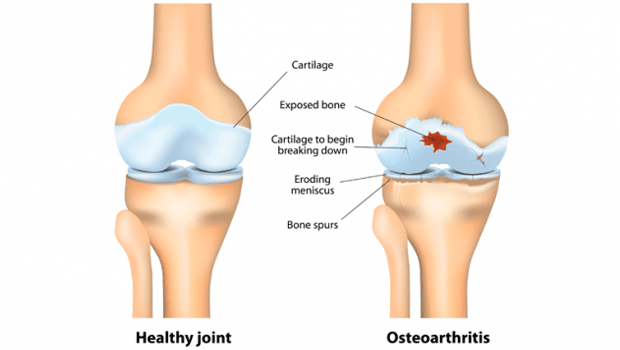 PinterestOsteoarthritis is caused by a reduction in the normal amount of cartilage tissue through wear and tear throughout life.
Osteoarthritis is a common degenerative joint disease that affects the cartilageTrusted Source, joint lining and ligaments, and underlying bone of a joint.
The breakdown of these tissues eventually leads to pain and joint stiffness.
The joints most often affected by osteoarthritis are those that get heavy use, such as hips, knees, hands, the spine, the base of the thumb, and the big toe joint.
PinterestOsteoarthritis is caused by a reduction in the normal amount of cartilage tissue through wear and tear throughout life.
Osteoarthritis is a common degenerative joint disease that affects the cartilageTrusted Source, joint lining and ligaments, and underlying bone of a joint.
The breakdown of these tissues eventually leads to pain and joint stiffness.
The joints most often affected by osteoarthritis are those that get heavy use, such as hips, knees, hands, the spine, the base of the thumb, and the big toe joint.
Childhood arthritis
This can refer to a number of types of arthritis. Juvenile idiopathic arthritis (JIA), also known as juvenile rheumatoid arthritis (JRA), is the most commonTrusted Source type.
Arthritis in childhood can cause permanent damage to joints, and there is no cure. However, remission is possible, during which time the disease remains inactive
It may be due to immune system problems.
Septic arthritis
This is thought to affect between 2 and 10 people in every 100,000 in the general population. Among people with RA, it may affect 30 to 70 people per 100,000.
Septic arthritis is a joint inflammation that results from a bacterial or fungal infection. It commonly affects the knee and hip.
It can develop when bacteria or other disease-causing micro-organisms spread through the blood to a joint, or when the joint is directly infected with a microorganism through injury or surgery.
Bacteria such as Staphylococcus, Streptococcus, or Neisseria gonorrhoeae cause most cases of acute septic arthritis. Organisms such as Mycobacterium tuberculosis and Candida albicans cause chronic septic arthritis. This is less common than acute septic arthritis.
Septic arthritis may occur at any age. In infants, it may occur before the age of 3 years. The hip is a common site of infection at this age.
Septic arthritis is uncommon from 3 years to adolescence. Children with septic arthritis are more likely than adults to be infected with Group B Streptococcus or Haemophilus influenzae if they have not been vaccinated
The incidence of bacterial arthritis caused by infection with H. influenzae has decreased by around 70 percent to 80 percent since the use of the H. influenzae b (Hib) vaccine became common.
Arthritis associated with colitis or psoriasis
The following conditions increase the risk of developing septic arthritis:
existing joint disease or damage
artificial joint implants
bacterial infection elsewhere in the body
presence of bacteria in the blood
chronic illness or disease (such as diabetes, RA and sickle cell disease)
intravenous (IV) or injection drug use
medications that suppress the immune system
recent joint injury
recent joint arthroscopy or other surgery
conditions such as HIV, that weaken immunity
diabetes
older age
Septic arthritis is a rheumatologic emergency as it can lead to rapid joint destruction. It can be fatal.
existing joint disease or damage
artificial joint implants
bacterial infection elsewhere in the body
presence of bacteria in the blood
chronic illness or disease (such as diabetes, RA and sickle cell disease)
intravenous (IV) or injection drug use
medications that suppress the immune system
recent joint injury
recent joint arthroscopy or other surgery
conditions such as HIV, that weaken immunity
diabetes
older age
Septic arthritis is a rheumatologic emergency as it can lead to rapid joint destruction. It can be fatal.
Fibromyalgia
Fibromyalgia affects an estimated 4 millionTrusted Source adults in the U.S, or around 2 percent of the population.
It usually starts during middle age or after, but it can affect children.
Fibromyalgia can involve:
widespread pain
sleep disturbance
fatigue
depression
problems with thinking and remembering
The person may experience abnormal pain processing, where they reacts strongly to something that other people would not find painful.
There may also be tingling or numbness in the hands and feet, pain in the jaw, and digestive problems.
The causes of fibromyalgia are unknown, but some factors have been loosely associated with disease onset:
stressful or traumatic events
post-traumatic stress disorder (PTSD)
injuries due to repetitive movements
illness, for example viral infections
having lupus, RA, or chronic fatigue syndrome
family history
obesity
It is more common among females.
Psoriatic arthritis
Psoriatic arthritis is a joint problem that often occurs with a skin condition called psoriasis. It is thought to affect between 0.3 and 1 percent of the population in the U.S., and between 6 and 42 percent of people with psoriasis.
Most people who have psoriatic arthritis and psoriasis develop psoriasis first and then psoriatic arthritis, but joint problems can occasionally occur before skin lesions appear.
The exact cause of psoriatic arthritis is not known, but it appears to involve the immune system attacking healthy cells and tissue. The abnormal immune response causes inflammation in the joints and an overproduction of skin cells. Damage to the joints can result.
Factors that increase the risk, include:
having psoriasis
family history
being aged from 30 to 50 year
People with psoriatic arthritis tend to have a higher number of risk factorsTrusted Source for cardiovascular disease than the general population, including increased BMI, triglycerides, and C-reactive protein.
Gout
Gout is a rheumatic disease that happens when uric acid crystals, or monosodium urate, form in body tissues and fluids. It happens when the body produces too much uric acid or does not excrete enough uric acid.
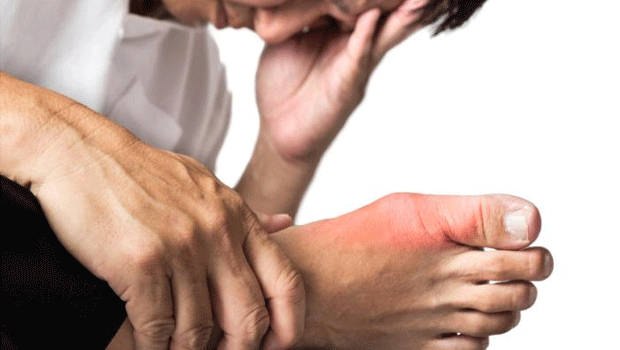 stGout causes agonizing pain in the joint, with the area becoming red, hot and swollen.
Acute gout normally appears as a severely red, hot, and swollen joint and severe pain.
stGout causes agonizing pain in the joint, with the area becoming red, hot and swollen.
Acute gout normally appears as a severely red, hot, and swollen joint and severe pain.
Risk factors include:
overweight or obesity
hypertension
alcohol intake
use of diuretics
a diet rich in meat and seafood
some common medicines
poor kidney function
Long periods of remission are possible, followed by flares lasting from days to weeks. Sometimes it can be chronic. Recurrent attacks of acute gout can lead to a degenerative form of chronic arthritis called gouty arthritis.
Sjögren’s syndrome
Sjögren’s syndrome is an autoimmune disorder that sometimes occurs alongside RA and SLE. It involves the destruction of glands that produce tears and saliva. This causes dryness in the mouth and eyes and in other areas that usually need moisture, such as the nose, throat, and skin.
It can also affect the joints, lungs, kidneys, blood vessels, digestive organs, and nerves.
Sjögren’s syndrome typically affects in adults aged 40 to 50 years, and especially women.
According to a study in Clinical and Experimental Rheumatology, in 40 to 50 percentTrusted Source of people with primary Sjögren’s syndrome, the condition affects tissues other than the glands.
It could affect the lungs, liver, or kidneys, or it could lead to skin vasculitis, peripheral neuropathy, glomerulonephritis, and low levels of a substance known as C4. These all indicate a link between Sjögren’s and the immune system.
If these tissues are affected, there is a high risk of developing non-Hodgkin’s lymphoma.
Scleroderma
Scleroderma refers to a group of diseases that affect connective tissue in the body. The person will have patches of hard, dry skin. Some types can affect the internal organs and small arteries.
Scar-like tissue builds up in the skin and causes damage.
cause is currently unknown. It often affects people between the ages of 30 to 50 years, and it may occur with other autoimmune diseases, such as lupus.
Scleroderma affects individuals differently. The complications include skin problems, weakness in the heart, lung damage, gastrointestinal problems, and kidney failure.
Systemic lupus erythematosus (SLE)
SLE, commonly known as lupus, is an autoimmune disease where the immune system produces antibodies to cells within the body leading toTrusted Source widespread inflammation and tissue damage. The disease is characterized by periods of illness and remissions.
It can appear at any age, but onset is most likelyTrusted Source is between the ages of 15 and 45 years. For every one man who gets lupus, between 4 and 12 women will do so.
Lupus can affect the joints, skin, brain, lungs, kidneys, blood vessels, and other tissues. Symptoms include fatigue, pain or swelling in joints, skin rashes, and fevers.
The cause remains unclear, but it could be linked to genetic, environmental, and hormonal factors.
Early signs
The symptoms of arthritis that appear and how they appear vary widely, depending on the type.
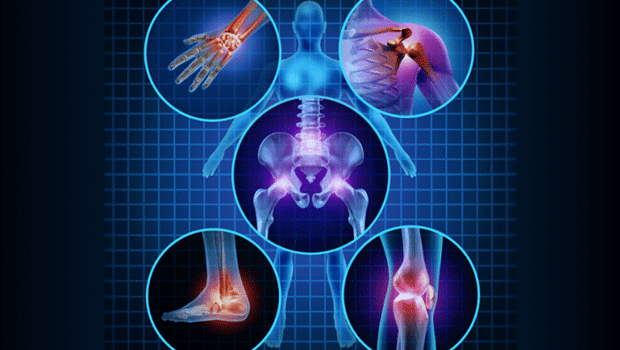 Warning signs of arthritis include pain, swelling, stiffness and difficulty moving a joint.
They can develop gradually or suddenly. As arthritis is most often a chronic disease, symptoms may come and go, or persist over time.
Warning signs of arthritis include pain, swelling, stiffness and difficulty moving a joint.
They can develop gradually or suddenly. As arthritis is most often a chronic disease, symptoms may come and go, or persist over time.
However, anyone who experiences any of the following four key warning signs should see a doctor.
- Pain: Pain from arthritis can be constant, or it may come and go. It may affect only one part, or be felt in many parts of the body
- Swelling: In some types of arthritis the skin over the affected joint becomes red and swollen and feels warm to the touch
- Stiffness. Stiffness is a typical symptom. With some types, this is most likely upon waking up in the morning, after sitting at a desk, or after sitting in a car for a long time. With other types, stiffness may occur after exercise, or it may be persistent.
- Difficulty moving a joint: If moving a joint or getting up from a chair is hard or painful, this could indicate arthritis or another joint problem.
Rheumatoid arthritis
RA is a systemic disease, so it usually affects the joints on both sides of the body equally. The joints of the wrists, fingers, knees, feet and ankles are the most commonly affected.
Joint symptoms may include:
morning stiffness, lasting more than 1 hour
pain, often in the same joints on both sides of the body
loss of range of motion of joints, possibly with deformity
Other symptoms include:
chest pain when breathing in, due to pleurisy
dry eyes and mouth, if Sjögren’s syndrome is present
eye burning, itching, and discharge
nodules under the skin, usually a sign of more severe disease
numbness, tingling, or burning in the hands and feet
sleep difficulties
Osteoarthritis
Osteoarthritis is usually a result of wear and tear on the joints. It will affect joints that have been overworked more than others. People with osteoarthritis may experience the following symptoms:
pain and stiffness in the joints
pain that becomes worse after exercise or pressure on the joint
rubbing, grating, or crackling sound when a joint is moved
morning stiffness
pain that causes sleep disturbances
Some people may have changes linked to osteoarthritis that show up in an x-ray, but they do not experience symptoms.
Osteoarthritis typically affects some joints more than others, such as the left or right knee, shoulder or wrist.
Childhood arthritis
Symptoms of childhood arthritis include:
a joint that is swollen, red, or warm
a joint that is stiff or limited in movement
limping or difficulty using an arm or leg
a sudden high fever that may come and go
a rash on the trunk and extremities that comes and goes with the fever
symptoms throughout the body, such as pale skin, swollen lymph glands
generally appearing unwell
Juvenile RA can also cause eye problems including uveitis, iridocyclitis, or iritis. If eye symptoms do occur they can include:
red eyes
eye pain, especially when looking at light
vision changes.
Septic arthritis
Symptoms of septic arthritis occur rapidly.
There is often:
fever
intense joint pain that becomes more severe with movement
joint swelling in one joint
Symptoms in newborns or infants include:
crying when the infected joint is moved
fever
inability to move the limb with the infected joint
irritability
Symptoms in children and adults include:
inability to move the limb with the infected joint
intense joint pain, swelling, and redness
fever.
Chills sometimes occur but are an uncommon symptom.
Fibromyalgia
Fibromyalgia may trigger the followingTrusted Source symptoms:
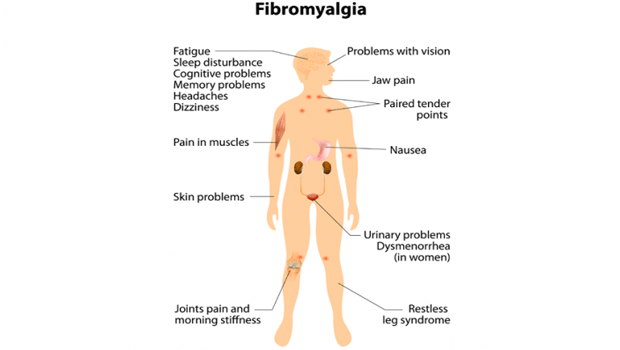
Fibromyalgia has many symptoms that tend to vary from person to person. The main symptom is widespread pain.
widespread pain, often with specific tender points
sleep disturbance
fatigue
psychological stress
morning stiffness
tingling or numbness in hands and feet
headaches, including migraines
irritable bowel syndrome
problems with thinking and memory, sometimes called “fibro fog”
Painful menstrual periods and other pain syndromes
Psoriatic arthritis
Symptoms of psoriatic arthritis may be mild and involve only a few joints such as the end of the fingers or toes.
Severe psoriatic arthritis can affect multiple joints, including the spine. Spinal symptoms are usually felt in the lower spine and sacrum. These consist of stiffness, burning, and pain.
People with psoriatic arthritis often have the skin and nail changes of psoriasis, and the skin gets worse at the same time as the arthritis.
Gout
Symptoms of gout involve:
pain and swelling, often in the big toe, knee, or ankle joints
sudden pain, often during the night, which may be throbbing, crushing, or excruciating
warm and tender joints that appear red and swollen
fever sometimes occurs
After having gout for many years, a person can develop tophi. Tophi are lumps below the skin, typically around the joints or apparent on fingertips and ears. Multiple, small tophi may develop, or a large white lump. This can cause deformation and stretching of the skin.
Sometimes, tophi burst and drain spontaneously, oozing a white, chalky substance. Tophi that are beginning to break through the skin can lead to infection or osteomyelitis. Some patients will need urgent surgery to drain the toph
Nomination form for 2022 Global Awards
https://www.unaniherbal.org/nomination-form.html
For Consultation click here
For more information you can also follow us on:
Copyright 2014 Unani Herbal
If you wish to cancel your subscription to this newsletter click here













